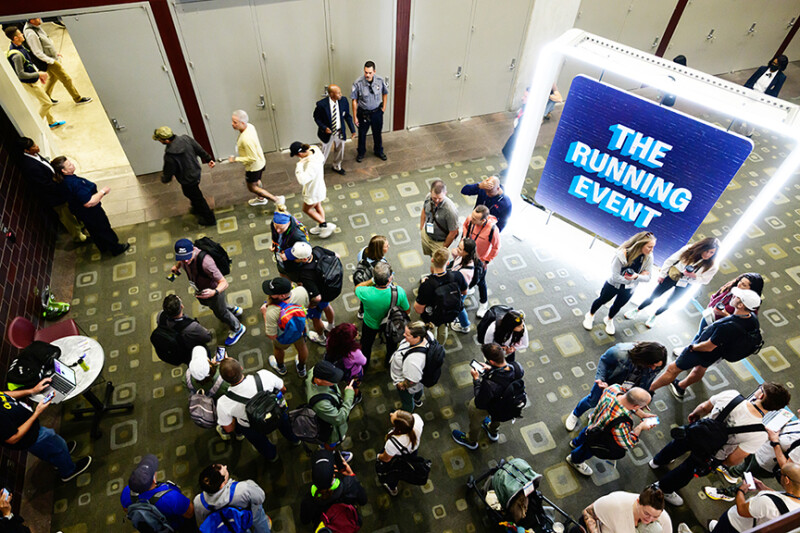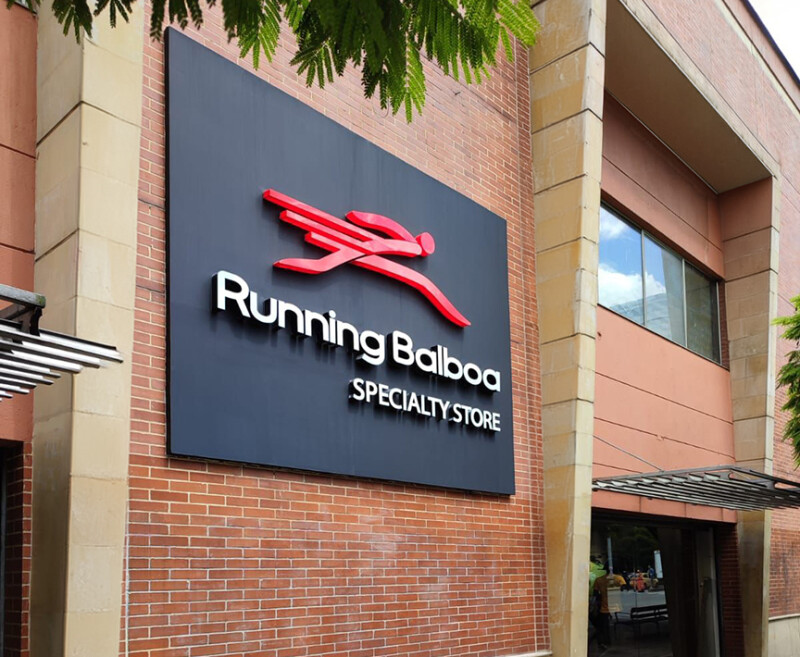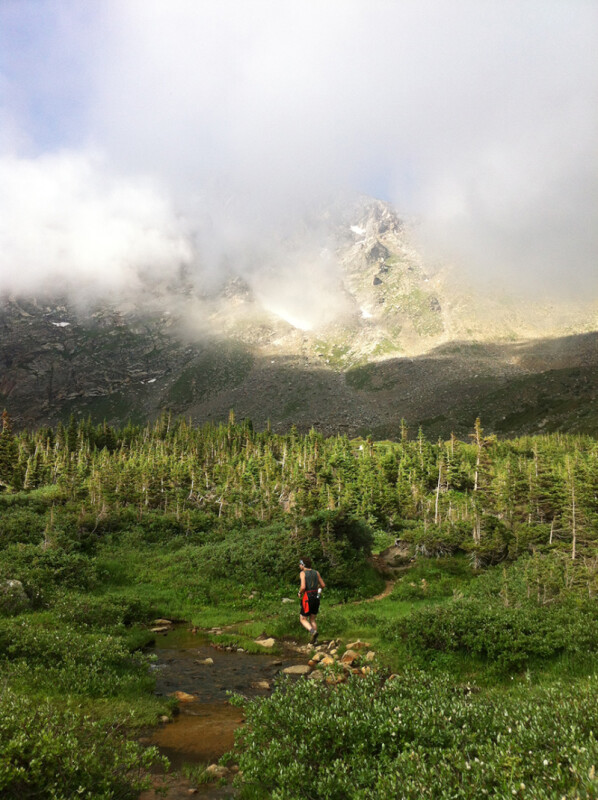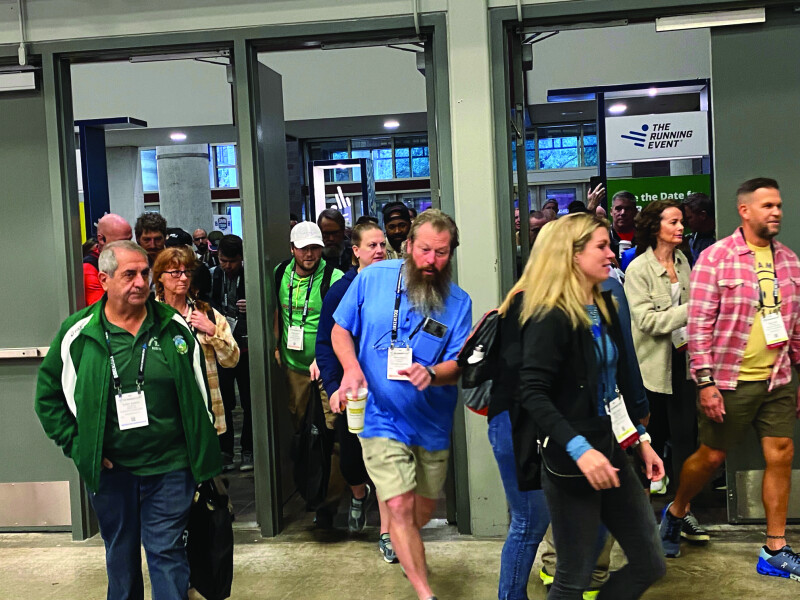The Fallen Arch specialty running store has been a staple on Lake Placid’s Main Street for more than a quarter century. In that time, co-owner Bob Tysen has witnessed the evolution of running shoes and running shoe trends — the minimalist turned maximalist era, the addition of carbon plates and the proliferation of trail running shoes. As the latter category has expanded, he’s also noticed it’s opening a market to a different type of customer: hikers.
“I started to notice this just before the pandemic,” says Tysen. “People were switching over to trail runners for their hikes.”
Due to the Fallen Arch’s location – right in the middle of the High Peaks region of the Adirondack State Park – it’s only natural the store would see a high degree of hiking traffic. But that population of shoe buyers seems to be onto the fact that trail runners can deliver a better experience, whether traipsing through muddy trails or up slick rock slabs in the nearby mountains.
“Trail runners are a much lighter shoe and more comfortable than a clunky hiking boot,” says Tysen. “These days, they are so well done that there aren’t that many situations where you need a boot.”
Shoe brands are noticing this new market, too. According to Russ Stevens, product director at Topo Athletic, the brand first noticed the shift from boots to trail runners with the “fast and light” hiking community, who gravitated out of a desire to lighten their loads. In 2024, the brand was the most popular choice on the Appalachian Trail.
“Our popularity on the AT was driven almost entirely by our trail running products, rather than our over-the-ankle-boot,” he says. “The adoption of trail runners has become broad enough that most hikers you would see on any of the long-distance trails in the U.S. will be wearing them rather than hiking boots.”
Topo’s retailers alongside the Pacific Crest Trail, the Continental Divide Trail and AT all report a shift in demand toward trail runners. “They do a fantastic job of explaining the benefit of using trail running shoes in a hike setting,” says Stevens.
Tysen says that the Altra Lone Peak has played well for Northeastern hikers looking to through-hike or assist friends out for the long haul. “We get a lot of people coming in who are crewing for through hikers on the AT in Vermont,” he says. “People are after fast and light in those situations.”
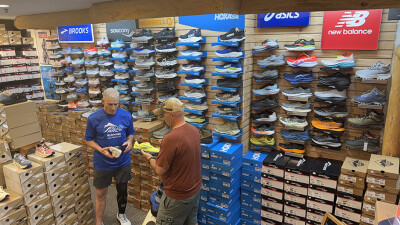
Creating a Niche
While not all running shoe stores are located near mountains or thick forested trails, the odds favor most have nearby state parks or trails of some sort. There’s also the fact that, since 2020, visits to national forests and parks have grown substantially. And that affords the opportunity to bring in hiking customers alongside running customers.
Bp-Run-CO, in Lakewood, CO, has always focused on the trail running market. “A typical store will be 80/20 road to trail shoes,” says shop manager Philip Snyder. “We do a 50/50 mix.”
In the past several years, however, part of the store’s trail running market has belonged to hikers. “I’m not sure if more people are hiking, or if people are realizing that a more flexible shoe is more comfortable on the trail,” says Snyder. “Most hiking shoes are heavy and stiff and just not all that comfortable.”
Trail shoes, by contrast, deliver what hikers need, according to Snyder. “They drain better than hiking boots and they’re much lighter, especially for through hiking,” he explained. “They also have grippy soles on them and they still offer protection against rocks.”
Trail runners from brands like Topo, Hoka, La Sportiva and others, in fact, feature Vibram Megagrip on the outsole, delivering a sense of security to hikers who take on slicker surfaces while on the trail. And, according to Stevens, trail runners require less break-in time than hiking boots. Hikers can go from just purchased to the trails in fast order.
Snyder has also seen trail runners become more durable in the past few years, making them a good long-term choice for hikers, as well. “They’re using foams and uppers that last much longer and can withstand the wear and tear of hiking,” he says.
Serving Both Customers
No matter all the benefits of trail runners over hiking boots, retailers will still encounter some customers who are intent on boots. In those cases, having a boot model on hand may buy you a customer. Or, says Snyder, “If a customer really wants a boot, I recommend another local store.”
As a retailer, having an awareness of trail running brands and models – and their applicability to hiking – can open untapped sales, according to Tysen.
“We sell so few hiking boots relative to trail runners these days,” he says. “Out of every 100 pairs, probably 95 are trail runners.”

